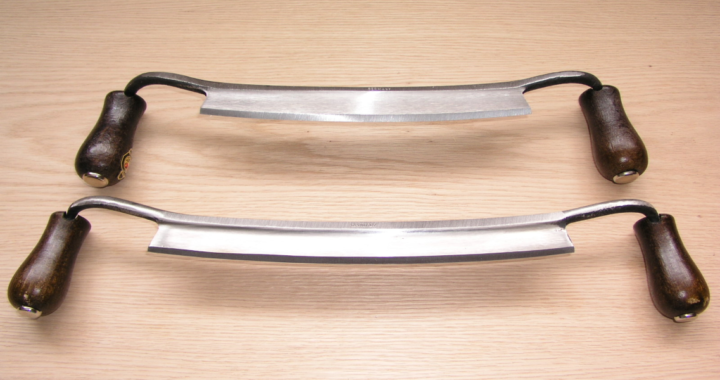Draw_knife (Download)
Draw knife safety 1 Draw knife T raditional woodworking hand tool used to shape wood by removing shavings. It consists of a blade with a handle at each end. The blade is much longer (along the cutting edge) than it is deep (from cutting edge to back edge). It is pulled or “drawn” (hence the name) toward the user. Source: http://en.wikipedia.org/wiki/Drawknife 2 History of Draw knife This 12″ Straight Blade Draw Knife is hand forged out of the highest quality German steel by “Ox head”, one of the oldest German tool companies with a tool-making tradition dating back to 1781. Source: http://www.traditionalwoodworker.com/Draw-Knife-12-Straight-Blade-by-Iltis-Oxhead/productinfo/598-3000/ 3 Its heavy-duty design and the cutting edge of the blade measures approximately 12“ long and 1 3/8″ wide. To make for a strong and secure attachment, the tangs (ends of the blade that are tapered) extend fully through the extra large handles which are crafted from European Hardwood Source:http :// www.traditionalwoodworker.com /Draw-Knife-12-Straight-Blade-by-Iltis-Oxhead/ productinfo /598-3000/ 4 Draw knife blade The drawknife in the illustration has a blade slightly over 9 inches long, much shorter drawknives are also made. The blade is sharpened to a chisel bevel . The handles can be below the level of the blade (as in the illustration) or at the same level Source: http://en.wikipedia.org/wiki/Drawknife 5 Draw knife in Construction Draw knife is used as a carpenter’s tool In use the draw-knife is drawn towards the user to remove wood from a surface, similar to a plane but more controllable. Draw-knives were anciently used for roughly rounding timber prior to turning on a lathe, and are still used by craftsmen around the world Source: http://www.probertencyclopaedia.com/cgi-bin/res.pl?keyword=Blade&offset=0 6 Standard Usage 1. Secure the log into a shaving horse or in a mounted vice. 2. Stand behind the end of the log. Put a hand on each handle of the draw knife facing the blade. 3. Work the drawknife under the bark at the end of the log. Source: http://www.ehow.com/how_2161042_use-draw-knife.html 7 Primary Modes of Accident Causation Splinters Muscle strains/sprains Particulates in the eyes Tripping over accumulated wood residues 8 OSHA Accident Investigation Data No construction worker fatalities involving draw knives were investigated by OSHA between 1990 and 2009. Source: Extracted from OSHA fatality investigation data 1990-2009 9 The OSHA regulations do not specifically address the safe use of draw knives CFR 1926 10 Wire mesh gloves and an apron if there is a risk of cuts. Safety glasses, goggles, or other eye protection Wear boots while working in a wet area. PPE Requirements Source: http://www.elcosh.org/en/document/266/d000260/hand-tools-training-guide.html 11 Use the right draw knife (size) for the job Keep the draw knife well sharpened Before each use, check that the draw knife does not have loose handles Keep secure footing and balance when using the draw knife Safety Procedure and best practice Reference: http://www.elcosh.org/en/document/266/d000260/hand-tools-training-guide.html 12 Use draw knife on a stable work surface Avoid awkward positions when using the draw knife Make sure to have enough space to work, and to keep body at a comfortable angle to the work Store draw knives in a safe location Carry draw knife properly Safety Procedure and best practice Reference: http://www.elcosh.org/en/document/266/d000260/hand-tools-training-guide.html 13 THINK SAFELY WORK SAFELY 14

